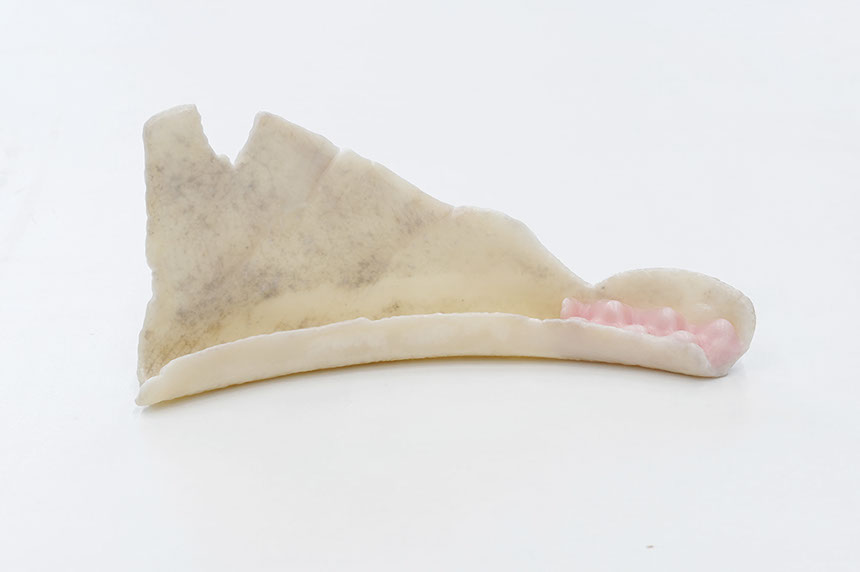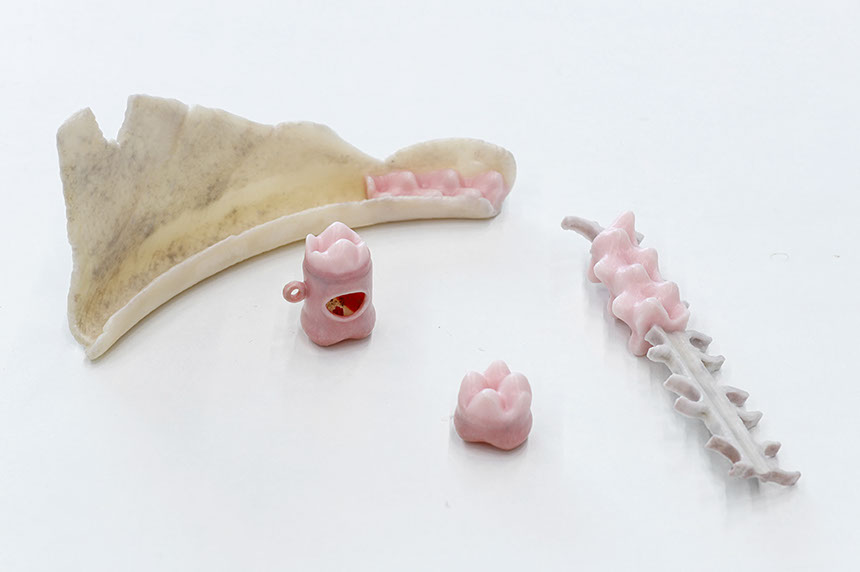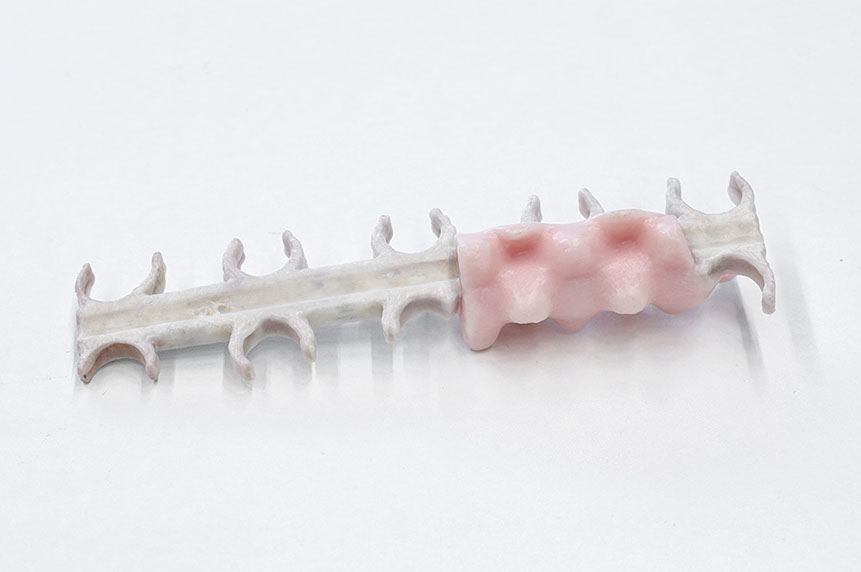-crop-u89624.jpg?crc=4235936445)
Vue de l'exposition collective Opening dinner
Violet art space, Anvers, Belgique, 2022
-crop-u89617.jpg?crc=136277542)
leftovers - 2022
objet trouvé en bord de mer, mousse alvéolée
colle blanche, poudre de talc
9 x 16 x 5 cm, 2022
-crop-u89635.jpg?crc=331076534)
-crop-u89645.jpg?crc=3851310738)
-crop-u89639.jpg?crc=490002542)


leftovers - 2022
objet trouvé en bord de mer, mousse alvéolée
colle blanche, poudre de talc
9 x 16 x 5 cm, 2022

-crop-u89642.jpg?crc=65058164)
-crop-u89630.jpg?crc=4249761119)
About the exhibition Opening dinner
The name of the Phoenician letter O was ʿeyn, meaning “eye”, and indeed its shape originates simply as a drawing of a human eye (possibly inspired by the corresponding Egyptian hieroglyph).
The Phoenician alphabet (1050-150 BC) is also called the Early Linear script, because it is an early development of the pictographic Proto- or Old Canaanite script, into a linear, alphabetic script, also marking the transfer from a multi-directional writing system, where a variety of writing directions occurred, to a regulated horizontal, right-to-left script. [We could reverse this, befitting these post-post-post-modern times.]
The use of the Phoenician letter O for a vowel sound is due to the early Greek alphabets, which adopted the letter as O “omicron” to represent the vowel /o/. The letter was adopted with this value in the Old Italic alphabets, including the early Latin alphabet. In Greek, a variation of the form later came to distinguish this long sound (Omega, meaning “large O”) from the short o (Omicron, meaning “small o”). Greek omicron gave rise to the corresponding Cyrillic letter O and the early Italic letter to runic ᛟ.
Even alphabets that are not derived from Semitic tend to have similar forms to represent this sound; for example, the creators of the Afaka and Ol Chiki scripts, each invented in different parts of the world in the last century, both attributed their vowels for ‘O’ to the shape of the mouth when making this sound.”
Today: O, or o, is the fifteenth letter in the ISO basic Latin alphabet. [a.o.] Its graphic form has remained fairly constant from Phoenician times up until now.
Future: uncertain. May be developed during this exhibition.
… because together with violet and invited artists, Luc Avargues explores the o, the circle, the form, the meaning.
In his practice Luc Avargues involves the art of cooking. Just like the letter O, cooking has already come a long way. In cooking you find hidden and sometimes highly personal stories, passed recipes, encapsulated methods and new possibilities. It encompasses secret flavors, big gestures and small signs.
Like the letter o, the art of cooking is formed by encounters. It is open to changes and always interacting, cooking is always a collaboration between (sometimes) a recipe or a vague idea about a dish (brewed by culinary experiences), ingredients and the ones who cook, stir, whip, shake. And those who eat, drink, taste, chew, swallow and digest. To perhaps pass on the same taste (or just a different one) afterwards to (??).
The center of Opening Dinner is a circle, a circular table that invites. Where artists serve art. Art that can be eaten, not necessarily in a normal way, but still, it can be chewed, you can taste it, swallow it and it will eventually be digested. And thus further formed. And formed. And formed. We might meet the same flavor again; maybe not. We are wanderers. Circling wanderers. In this we remain fairly constant.
Opening Dinner included works by Luc Avargues, Martin Belou, Babs Decruyenaere, Lot Doms, Liesbet Grupping, Plume Ribout Martini & Hugo Livet, Bruno Silva, Vincent Tanguy, Roeland Tweelinckx and Floris Vanhoof.
www.violetart.space/exhibitions/opening-dinner/
Opening during Antwerp Art Weekend, 26 May until 29 May 2022